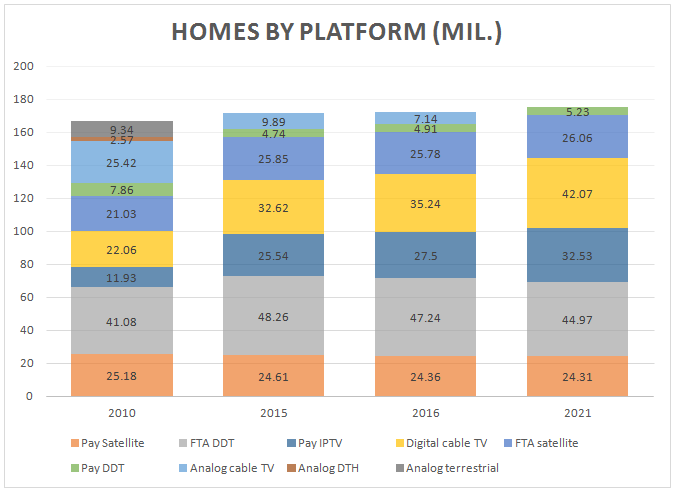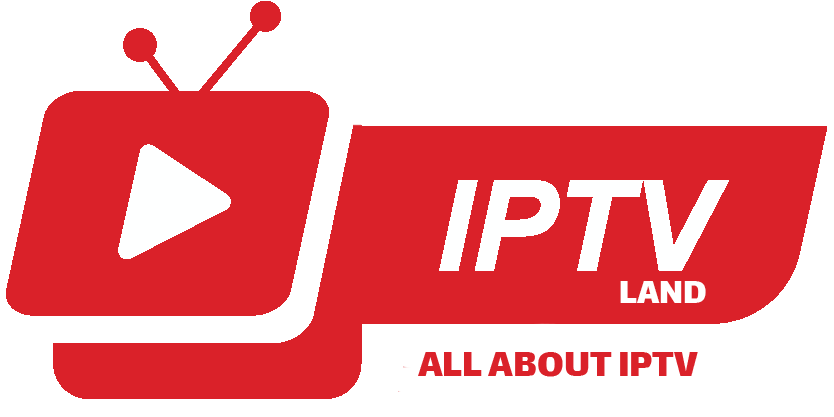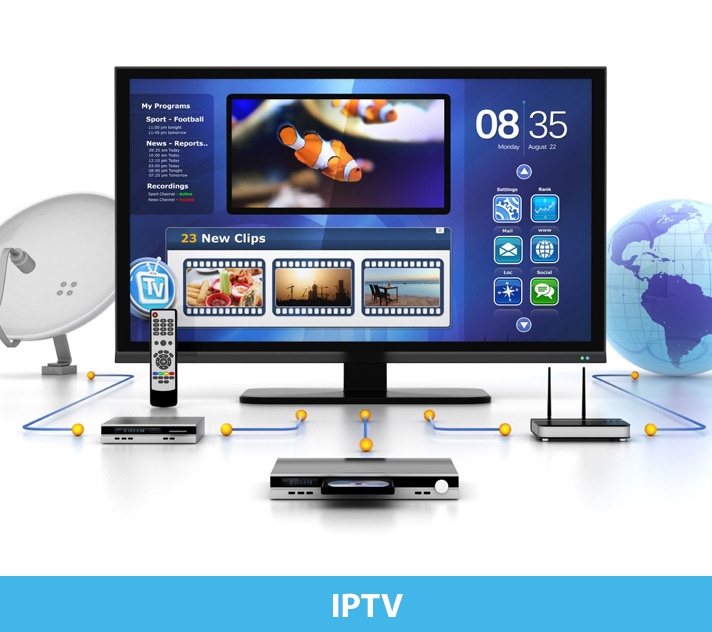According to the Digital TV Western Europe Forecasts report, 2015 is a landmark year for IPTV in Western Europe. The number of IPTV subscribers has finally overtaken the number of pay satellite TV users and is forecasted to grow by 27% between 2015 and 2021. So by 2021, the IPTV audience will count 32,5 million houses and IPTV revenues will reach $5.77 billion.
At the same time, the number of homes subscribed to satellite TV will fall by 300 thousand, and providers’ revenues will fall by $1 billion (for 18 countries covered in the following report).

The pay-TV will be getting a sustainable market position. Its penetration is forecasted to increase from 56.8% in 2015 to just 59.5% in 2021. It equals to only 6.9 million new subscriptions in 6 years.
At the same time, the popularity of digital TV standards will increase. The audience of digital pay-TV will grow by nearly 17 million subs (19%) and digital cable audiences will welcome almost 10 million new subs.
The hardest task will be to convert the remaining 9.9 million analog cable homes to digital standard, as many of these homes pay for basic analog TV packages as a part of their rent. But when conversion finally happens, these homes are more likely to shift to free-to-air platforms such as DTT or satellite.
Actually, only seven reviewed European countries had fully converted to digital standards by the end of 2015. These countries are Finland, France, Iceland, Italy, Norway, Spain, and the UK.
By 2021, pay-TV penetration won’t be uniform as well. It will exceed 90% in 8 countries and will fall in Germany, Netherlands, Norway, Sweden, and Switzerland due to a large number of legacy analog cable subs. As for revenues, the UK will remain the most lucrative pay-TV market. Despite having the biggest number of subscribers, Germany’s pay-TV revenues will remain much lower. The same situation will prevail in France and Italy.
Advantages of IPTV
As we can see, the pay-TV market tends to grow mostly due to new IPTV subs. The popularity of this TV standard will be increasing in the future creating new clients and business opportunities. The reasons for such growth lies in user benefits of the standard:
High image and sound quality
Most IPTV providers support HD content and 5.1 surround sound. Also, IPTV set-top boxes manufacturers were among the first who reacted on 4K content extension.
Interactivity
A user can interact with the content. For example, to see the movie teaser or to submit a review.
Additional opportunities
IPTV provides such features as time shift, archive, and video-on-demand, etc. That makes watching even more convenient.
What happens to existing providers?
This growth opens a good scope of work for service providers. The most perspective may become niche services. They will be able to cover their audience almost without competition, and the abundance of content will allow to fully satisfy the viewers.
Another factor is the development of client equipment such as set-top boxes. Manufacturers provide the market with a variety of solutions from the simplest ones to UltraHD supporting.
One of the most attractive features of IPTV business is minimal outlay. All you need to launch a new project is content, servers, and client equipment. Some companies even provide special solutions for those who start.But even with such broad opportunities, operators and content providers should have a finger on a pulse. Rapid market and technology development can lead both to high profits and to absolute breakdown. So it’s important to follow the latest industry news and to find reliable partners.





